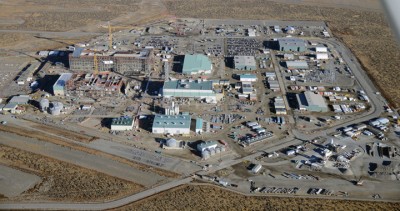Hanford Vit Plant Facilities Overview
 The Hanford Site, located in southeastern Washington state, was the largest of three defense production sites in the U.S. Over the span of 40 years, it was used to produce 64 metric tons of plutonium, helping end World War II and playing a major role in military defense efforts during the Cold War. As a result, 56 million gallons of radioactive and chemical wastes are now stored in 177 underground tanks on the Hanford Site.
The Hanford Site, located in southeastern Washington state, was the largest of three defense production sites in the U.S. Over the span of 40 years, it was used to produce 64 metric tons of plutonium, helping end World War II and playing a major role in military defense efforts during the Cold War. As a result, 56 million gallons of radioactive and chemical wastes are now stored in 177 underground tanks on the Hanford Site.
To address this challenge, the U.S. Department of Energy contracted Bechtel National, Inc., to design and build the world’s largest radioactive waste treatment plant. The Waste Treatment and Immobilization Plant, also known as the Vit Plant, will use vitrification to immobilize most of Hanford’s dangerous tank waste. Vitrification involves blending the waste with molten glass, heating it to high temperatures, then pouring it into stainless steel canisters. In this glass form, the waste is stable and impervious to the environment, and its radioactivity will dissipate over hundreds to thousands of years.
The Vit Plant will cover 65 acres with four nuclear facilities –
– as well as operations and maintenance buildings, utilities and office space. Site preparation began in October 2001, and the concrete for the first nuclear facility’s foundation was placed in July 2002.
CONSTRUCTION FACTS
- Concrete: 262,000 cubic yards, enough to fill 26,200 concrete trucks
- Structural steel: 40,000 tons, the equivalent of four Eiffel Towers
- Heating and ventilation ductwork: 2,100 tons
- Piping: 1,017,000 linear feet, if laid end-to-end, would stretch more than 193 miles
- Electrical cable: 4,762,000 feet, if laid end-to-end, would stretch more than 900 miles





